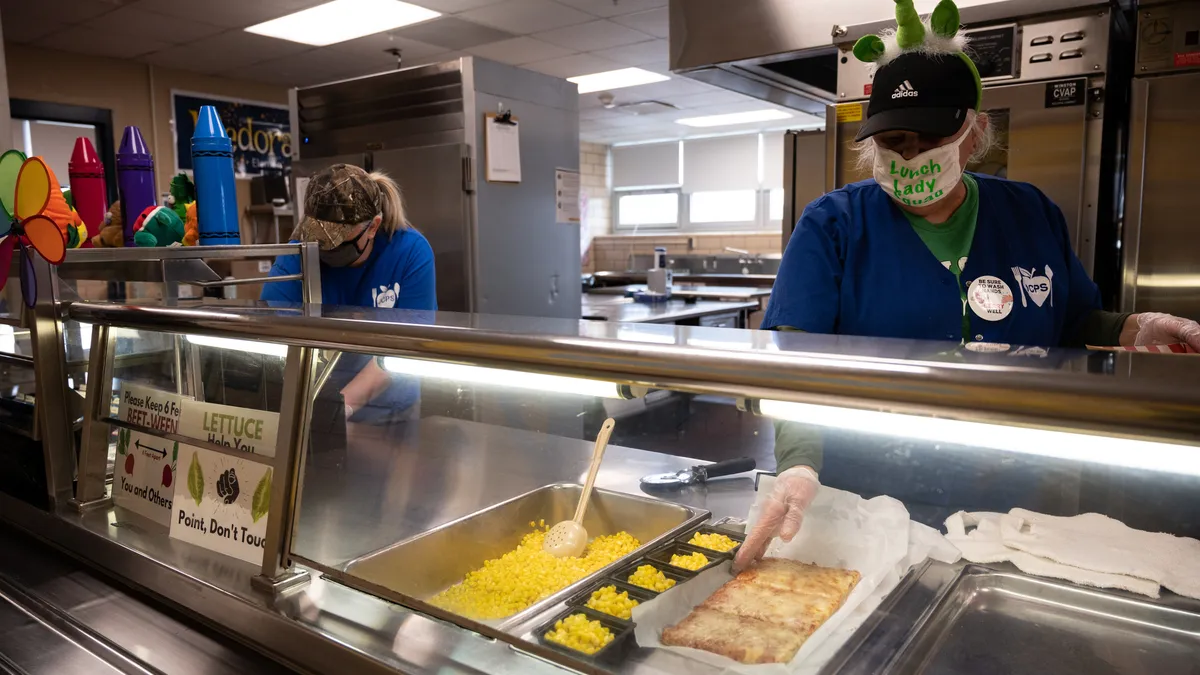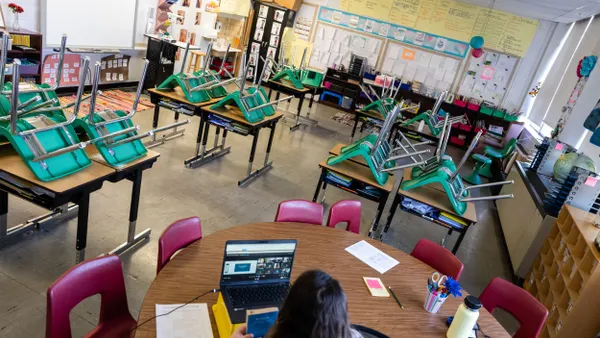Dive Brief:
- In a recently released School Nutrition Association survey of 1,212 districts, 38% of respondents reported their school meal programs ended the 2020-21 school year with an overall net loss, and a third of those districts reported financial shortfalls exceeding their reserves. The numbers highlight financial hardships these programs faced due to the pandemic.
- The survey further highlighted that only about half of school meal programs found the increases to reimbursement rates provided by the U.S. Department of Agriculture for breakfast and lunch sufficient to cover costs. On top of that, 95% of respondents indicated staff shortages are a challenge for their programs.
- Between rising labor and food supply costs, several district food service directors expressed a need for more financial assistance from Congress during a Thursday webinar held by SNA and No Kid Hungry, a nonprofit campaign to end child hunger. SNA is also urging USDA to extend pandemic-related waivers through the 2022-23 school year.
Dive Insight:
Without the extra meal reimbursement in the 2021-22 school year and the current USDA waivers allowing flexibility for meal pattern violations, it would have been difficult for Bridgeton Public Schools in New Jersey to meet expenses, said Warren DeShields, the district’s food service director, during the webinar. DeShields was one of several food service directors discussing the toll that supply chain woes have taken on school meal programs.
Surveyed districts demonstrated a need for continuing the USDA's nutrition standard waiver, which provides flexibility for school meal patterns, though not all standards have been relinquished. In fact, 96% of respondents in the SNA survey experienced challenges with suppliers not carrying sufficient menu items that meet federal nutrition guidelines.
As districts compete with restaurants for labor in school meal programs, the need to raise staff wages has increased as well. The SNA survey found 42% of programs raised staff salaries, while 15% are considering the move. Additionally, 19% are offering bonuses, and another 14% are considering doing the same.
Among the programs not providing raises, 58% said they did not receive district permission to do so. A third of those who did not provide extra financial support for staff said they lacked sufficient funding for raises, according to the SNA report.
“If the waivers go away or we can’t have the [raised meal reimbursement rates] in the coming year with that increased amount of money, then I don’t know how we’re going to be able to stay afloat and try and tackle the labor issue,” DeShields said.
In Denver, Colorado, hourly food service staff wages at Jefferson County Public Schools recently rose from $13.25 to $15, said Beth Wallace, executive director of food and nutrition services for the district, during the webinar.
“That is a significant increase of what we’re paying for labor, and we’re seeing our food costs coming in much higher,” Wallace said.
Since August, the supply chain crisis has significantly impacted the availability of food items, causing districts to pivot on menu listings on a daily basis. Now, districts like JCPS are noticing higher food costs caused by supply chain issues as well. The SNA survey found 97% of respondents are challenged by higher costs compared to contracted bids, with nearly 75% of school meal programs citing that as a “significant challenge.”
To return to a “normal” operation for school meal programs, it’s going to take a tremendous amount of planning, said Dimitra “Mimi” Barrios, food service director at Ridley School District in Pennsylvania, during the webinar. She said the issue of rising costs and labor isn’t going away in the near future, which is why it’s critical for USDA to continue the higher meal reimbursement rate.
The sooner USDA waivers and meal reimbursements are extended, the easier it will be for districts to plan for the next school year, Wallace added.












